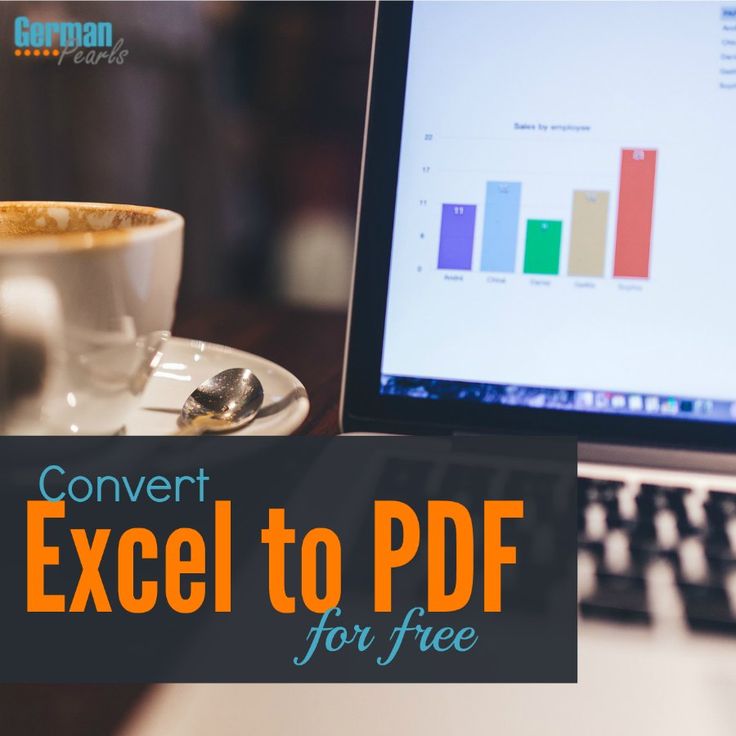5 Ways to Convert Multiple Excel Sheets to PDF

Converting multiple Excel sheets to PDF can streamline your document management, making it easier to share, print, and preserve spreadsheets in a universally accessible format. This process can be particularly useful for businesses, academic research, or anyone dealing with large datasets or intricate reports. Here, we'll explore five effective methods to achieve this conversion with varying degrees of automation, complexity, and cost.
Using Microsoft Excel’s Built-In Feature

Microsoft Excel, starting from Excel 2010, includes a feature to save files directly as PDFs. Here’s how you can do it:
- Open your Excel workbook.
- Go to File > Save As.
- Choose PDF as the file format.
- Select Options to open the dialog box. Check the box for Entire Workbook to ensure all sheets are converted.
- Click OK and then Save.
💡 Note: This method is ideal for quick conversions but might not be the best for batch processing or if you need to customize the output significantly.
Automating with VBA in Excel

For those looking to convert multiple Excel sheets to PDF with automation and customization, using Visual Basic for Applications (VBA) is an excellent approach:
- Press Alt+F11 to open the VBA editor.
- In the Project Explorer, double-click on ThisWorkbook and paste the following code:
Sub ConvertSheetsToPDF()
Dim ws As Worksheet
For Each ws In ThisWorkbook.Worksheets
ws.ExportAsFixedFormat Type:=xlTypePDF, Filename:= _
ws.Name & “.pdf”, Quality:=xlQualityStandard, _
IncludeDocProperties:=True, IgnorePrintAreas:=False, _
OpenAfterPublish:=False
Next ws
End Sub
🔍 Note: VBA requires some familiarity with coding. However, it provides immense flexibility for customization and automation.
Using Adobe Acrobat Pro DC

If you have Adobe Acrobat Pro DC, here’s how you can batch convert Excel files to PDF:
- Open Adobe Acrobat Pro DC.
- Click on Tools > Create PDF > Multiple Files.
- Select your Excel files. You can select multiple files at once or use the Add Files option for an entire folder.
- Once added, click Combine Files.
| Feature | Excel Built-in | VBA | Adobe Acrobat Pro DC |
|---|---|---|---|
| Ease of Use | High | Medium | Medium |
| Automation | None | High | Medium |
| Cost | Included with Excel | Free (if you have Excel) | Subscription-based |

Third-Party Software

There are numerous third-party tools and services designed to convert Excel to PDF:
- Smallpdf: An online service where you can upload and convert files.
- Nitro Pro: A comprehensive PDF editor with batch conversion features.
- Online Convert: A versatile tool for converting between various document formats.
🖱️ Note: Third-party solutions can be user-friendly but consider privacy and security when using online services for sensitive data.
Python Script with openpyxl and ReportLab

For those comfortable with programming, Python offers an elegant solution:
- Install necessary libraries using
pip install openpyxl reportlab. - Write a Python script like the following to convert sheets to PDF:
from openpyxl import load_workbook from reportlab.pdfgen import canvas from reportlab.lib.pagesizes import letter from reportlab.pdfbase.pdfmetrics import registerFont from reportlab.pdfbase.ttfonts import TTFontdef convert_sheet_to_pdf(sheet): wb = load_workbook(sheet) pdf_file = canvas.Canvas(f”{sheet}.pdf”, pagesize=letter) registerFont(TTFont(‘Arial’, ‘Arial.ttf’)) pdf_file.setFont(‘Arial’, 12) for row in wb.active.iter_rows(): row_text = “.join([cell.value if cell.value else ” for cell in row]) pdf_file.drawString(50, 800 - row[0].row * 12, row_text) pdf_file.save()
convert_sheet_to_pdf(‘ExampleSheet.xlsx’)
In summarizing this exploration into converting multiple Excel sheets to PDF, we’ve covered a range of methods from straightforward, in-built features in Microsoft Excel to advanced scripting with Python. Each approach offers its own set of advantages:
Microsoft Excel Built-In Feature: Best for simplicity and quick conversions. It’s immediately accessible but lacks automation and customization options.
VBA Automation: Provides a high degree of control and is great for batch processing within Excel, though it requires some programming knowledge.
Adobe Acrobat Pro DC: Offers robust batch conversion alongside extensive PDF manipulation tools, but at a cost.
Third-Party Tools: Offer user-friendly interfaces for converting files, ideal for non-technical users, but privacy concerns may arise with online services.
Python Scripting: A versatile solution for those familiar with programming, enabling full customization of the conversion process and potentially integration into larger data workflows.
Whether you’re dealing with financial reports, academic data sets, or complex business analysis, choosing the right method depends on your needs for automation, cost considerations, privacy concerns, and the level of customization you require. By selecting the most suitable approach, you can efficiently convert your Excel sheets into PDFs, making your documents more accessible, shareable, and professional in presentation.
Can I convert specific sheets rather than the whole workbook?

+
Yes, you can use VBA scripting or Python to select and convert only the sheets you need into PDF.
Will the formatting of my Excel sheets be preserved in the PDF?

+
The formatting is largely preserved using Excel’s built-in features or Adobe Acrobat. However, complex formatting might require manual adjustments.
Are there free tools for converting multiple Excel sheets to PDF?

+
Yes, several online tools like Smallpdf and Online Convert offer free conversions with varying limitations on file size or output quality.



